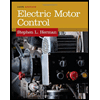Example 12.7. What happens to the blocking probabilities in Figure 12.6a and b discussed in Example 12.6 when the traffic intensity increases by 50%? Solution. If the traffic intensity of each group increases from 2.2 to 3.3 erlangs, the blocking probability of the configuration of Figure 12.6a increases from 5% to almost 14%. In the configuration of Figure 12.6b a 50% increase in the traffic intensity causes a 400% increase in the blocking probability (from 5 to 20%). Example 12.6. Four clusters of data terminals are to be connected to a computer by way of leased circuits, as shown in Figure 12.6. In Figure 12.6a the traffic from the clusters uses separate groups of shared circuits. In Figure 12.6b the traffic from all clusters is concentrated onto one common group of circuits. Determine the total number of circuits required in both cases when the maximum desired blocking probability is 5%. Assume that 22 terminals are in each cluster and each terminal is active 10% of the time. (Use a blocked calls cleared analysis.) (a) CPU CPU 13 Channels 20 Channels (b) Figure 12.6 Data terminal network of Example 10.6: (a) four separate groups; (b) all traffic concentrated into one group.
Example 12.7. What happens to the blocking probabilities in Figure 12.6a and b discussed in Example 12.6 when the traffic intensity increases by 50%? Solution. If the traffic intensity of each group increases from 2.2 to 3.3 erlangs, the blocking probability of the configuration of Figure 12.6a increases from 5% to almost 14%. In the configuration of Figure 12.6b a 50% increase in the traffic intensity causes a 400% increase in the blocking probability (from 5 to 20%). Example 12.6. Four clusters of data terminals are to be connected to a computer by way of leased circuits, as shown in Figure 12.6. In Figure 12.6a the traffic from the clusters uses separate groups of shared circuits. In Figure 12.6b the traffic from all clusters is concentrated onto one common group of circuits. Determine the total number of circuits required in both cases when the maximum desired blocking probability is 5%. Assume that 22 terminals are in each cluster and each terminal is active 10% of the time. (Use a blocked calls cleared analysis.) (a) CPU CPU 13 Channels 20 Channels (b) Figure 12.6 Data terminal network of Example 10.6: (a) four separate groups; (b) all traffic concentrated into one group.
Chapter22: Sequence Control
Section: Chapter Questions
Problem 1SQ: Describe what is meant by sequence control.
Related questions
Question
I just want a clarification how to measure the increase
figure 12.6a has 2.2 erlangs and 20 circuits
figure 12.6b has 8.8 erlangs and 13 cir

Transcribed Image Text:Example 12.7.
What happens to the blocking probabilities in Figure 12.6a and b
discussed in Example 12.6 when the traffic intensity increases by 50%?
Solution. If the traffic intensity of each group increases from 2.2 to 3.3 erlangs, the
blocking probability of the configuration of Figure 12.6a increases from 5% to almost
14%.
In the configuration of Figure 12.6b a 50% increase in the traffic intensity causes
a 400% increase in the blocking probability (from 5 to 20%).

Transcribed Image Text:Example 12.6.
Four clusters of data terminals are to be connected to a computer by
way of leased circuits, as shown in Figure 12.6. In Figure 12.6a the traffic from the
clusters uses separate groups of shared circuits. In Figure 12.6b the traffic from all
clusters is concentrated onto one common group of circuits. Determine the total
number of circuits required in both cases when the maximum desired blocking
probability is 5%. Assume that 22 terminals are in each cluster and each terminal is
active 10% of the time. (Use a blocked calls cleared analysis.)
(a)
CPU
CPU
13 Channels
20 Channels
(b)
Figure 12.6 Data terminal network of Example 10.6: (a) four separate groups; (b) all traffic
concentrated into one group.
Expert Solution
This question has been solved!
Explore an expertly crafted, step-by-step solution for a thorough understanding of key concepts.
Step by step
Solved in 2 steps with 10 images

Recommended textbooks for you


Power System Analysis and Design (MindTap Course …
Electrical Engineering
ISBN:
9781305632134
Author:
J. Duncan Glover, Thomas Overbye, Mulukutla S. Sarma
Publisher:
Cengage Learning

Electricity for Refrigeration, Heating, and Air C…
Mechanical Engineering
ISBN:
9781337399128
Author:
Russell E. Smith
Publisher:
Cengage Learning


Power System Analysis and Design (MindTap Course …
Electrical Engineering
ISBN:
9781305632134
Author:
J. Duncan Glover, Thomas Overbye, Mulukutla S. Sarma
Publisher:
Cengage Learning

Electricity for Refrigeration, Heating, and Air C…
Mechanical Engineering
ISBN:
9781337399128
Author:
Russell E. Smith
Publisher:
Cengage Learning